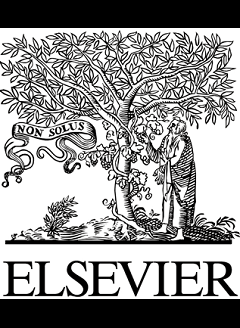مقاله ترجمه شده درباره زالی در آندروژنز جو – سال 2014

مشخصات مقاله:
عنوان فارسی مقاله:
زالی در آندروژنز جو
عنوان انگلیسی مقاله:
Albinism in barley androgenesis
کلمات کلیدی مقاله:
آندروژنز، جو، پلاستیدها، زالی، میکروسپور، گیاهان زال
مناسب برای رشته های دانشگاهی زیر:
زیست شناسی و کشاورزی
مناسب برای گرایش های دانشگاهی زیر:
ژنتیک، علوم گیاهی، ژنتیک مولکولی و مهندسی ژنتیک
وضعیت مقاله انگلیسی و ترجمه:
مقاله انگلیسی را میتوانید به صورت رایگان با فرمت PDF از باکس زیر دانلود نمایید. ترجمه این مقاله با فرمت WORD – DOC آماده خریداری و دانلود آنی میباشد.
فهرست مطالب:
چکیده
مقدمه
مطالعات سلولشناختی بر روی زالی
ژنوم پلاستید در آندروژنز
اثر ژنوم هستهای بر تولید زالها
اثر فاکتورهای خارجی بر تعداد زالها
نتیجهگیری
قسمتی از مقاله انگلیسی و ترجمه آن:
Introduction
In vitro androgenesis in plants was first performed almost 50 years ago (Guha and Maheshvari 1964). This process involves the development of androgenic embryos from cells of male gametophytic pathway––the microspores. Microspores at an appropriate developmental stage subjected to different types of exogenous stresses can be reprogrammed. The developmental pathway change from gametophyte to sporophyte results in the formation of androgenic embryos (Ja¨hne and Lo¨rz 1995; Touraev et al. 2001). After chromosome doubling these plants become doubled haploid (DH), which means that they can reasonably be expected to be homozygous at every genetic locus. DH plants are an attractive material for a variety of research and breeding programs including the development of new cultivars, genetic mapping, localisation of quantitative traits loci (QTL) (Devaux and Pickering 2005), transformation (Kumlehn et al. 2006) and embryological studies (Wro´bel et al. 2011). Additional applications include the development of specific chromosome stocks, specifically the cases where gametic selection reduces male transmission of specific chromosomes (for example, the development of disomic alien addition lines). Owing to a large number of microspores present in a single anther, and a large number of anthers per spike, the expectation appears reasonable that the number of androgenic plants generated from a single spike would be in the tens of thousands. However, in a plant such as barley, the number of regenerated green plants per 100 responding anthers can range from zero to several hundred, depending on the genotype (Jacquard et al. 2009; Li and Devaux 2003). The reasons for such a disparity are due to a variety of factors, including the ability of microspores to alter their developmental pathway, the survival rates of in vitro cultures, the efficiency of androgenic embryo production, and the regeneration ability to form green plants, as well as the highly important phenomenon of albinism.
مقدمه
آندروژنز گیاهان در شرایط آزمایشگاهی برای اولین بار در 50 سال پیش انجام شد. این فرآیند شامل تکوین جنینهای آندروژنیک از مسیر گامتوفیتی نر یا میکروسپورها است. میکروسپورهایی که در یک مرحلهی تکوینی مناسب تحت انواع مختلف استرسهای برونزا قرار گیرند را میتوان برنامهریزی کرد. مسیر تکوینی از گامتوفیت به اسپروفیت تغییر کرده و سبب شکلگیری جنینهای آندروژنیک خواهد شد. پس از مضاعف شدن کروموزوم، این گیاهان به هاپلوئیدهای مضاعف (DH) تبدیل میشوند، به این معنی که میتوان از آنها انتظار داشت در هر جایگاه ژنتیکی هموزیگوت باشند. گیاهان هاپلوئید مضاعف موارد جذابی برای مجموعهای از تحقیقات و برنامههای تولیدمثلی از جمله توسعهی ارقام جدید، نقشهبرداری ژنتیکی، مکانیابی جایگاههای صفات کمی (QTL)، دگرگونی، و مطالعات جنینشناسی هستند. کاربردهای اضافی مانند ایجاد ذخایر کروموزومی خاص است، مخصوصا مواردی که انتخاب گامتی انتقال کروموزومهای خاص نر را کاهش میدهند (برای مثال، تکامل ارقام اضافی بیگانه disomic).
با توجه به تعداد زیاد میکروسپورهای موجود در یک بساک، و تعداد بالای بساکها در سنبله، بنظر معقول میرسد که تعداد گیاهان آندروژنیک تولید شده از یک سنبله به دهها هزار برسد. با این حال در گیاهی مانند جو، تعداد گیاهان سبز تولید شده در 100 بساک بسته به ژنوتیپ میتواند از صفر تا چند صد باشد. دلایل چنین اختلافی بخاطر مجموعهای از عوامل از جمله توانایی میکروسپورها برای تغییر مسیر تکوینیشان، نرخهای بقا در کشتهای آزمایشگاهی، بازده تولید جنین آندروژنیک، توانایی تولید گیاهان سبز و همچنین پدیدهی بسیار مهم زالی است.


